Nature is full of fascinating and sometimes brutal adaptations, but few are as shocking as the birthing process of the spotted hyena. You might think childbirth is a universally painful experience, but hyenas take it to an entirely new level.
Female hyenas have one of the most unusual reproductive anatomies in the animal kingdom—what appears to be a penis is actually an elongated clitoris, known as a pseudo-penis. This rare adaptation makes mating, birth, and survival incredibly difficult for both mother and cubs.
Let’s dive into the science, struggles, and evolutionary mysteries behind why hyenas experience one of the most challenging births in the wild.
Hyenas’ Unique Reproductive Anatomy: A Bizarre Evolutionary Twist
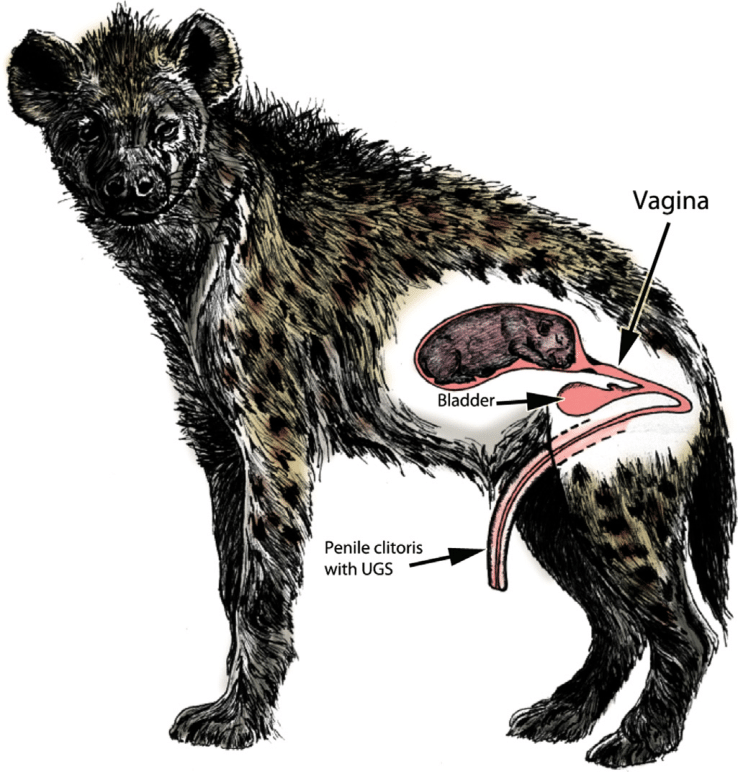
The female spotted hyena (Crocuta crocuta) is unlike any other mammal when it comes to reproduction. Unlike most female mammals, hyenas have no external vaginal opening. Instead, their labia are fused together, forming a pseudo-scrotum, and their clitoris is elongated into what resembles a fully functional penis.
This means that both mating and giving birth happen through a narrow, tough, and inflexible canal—a structure that poses serious risks to both mother and cubs.
But why would evolution favor such an extreme adaptation? The answer lies in hyena social structure and dominance.
The Link Between Dominance and Reproductive Anatomy
Hyenas live in strict matriarchal societies, where females outrank males in dominance. The unusual reproductive anatomy is believed to be an evolutionary adaptation linked to social hierarchy.
- A Display of Strength: A larger pseudo-penis might act as a dominance signal, making it clear which females hold power in the clan.
- Hormonal Influence: Female hyenas have higher testosterone levels than males, leading to increased aggression and dominance over the pack.
- Mating Challenges: Males must earn the right to mate, as females control copulation with their complicated anatomy.
Video : Hyenas’ Brutal Birth: The Most Painful Labor in the Animal Kingdom
While this system gives females power, it comes at a terrible cost when it’s time to give birth.
Why Giving Birth Is So Dangerous for Hyenas
Imagine trying to push a newborn through a passage too small, too rigid, and highly prone to tearing. That’s exactly what female hyenas go through every time they give birth.
Here’s what makes hyena birth so deadly:
- A Super Tight Birth Canal
- The pseudo-penis acts as the only birth canal, but it is long, narrow, and lacks the elasticity of a normal vagina.
- This makes labor extremely difficult and painful, with a high chance of the tissue tearing.
- First-Time Mothers Face the Worst Risks
- Many first-time mothers do not survive the birthing process due to severe ruptures.
- Those who do survive often suffer from long-term damage to their reproductive organs.
- High Cub Mortality Rate
- A staggering 60% of hyena cubs suffocate before they are fully delivered.
- Since the birth canal is so tight, cubs often become trapped and die before they can emerge.
- A Painful Recovery Process
- After birth, the pseudo-penis often ruptures completely, forcing it to heal over time.
- Mothers suffer weeks of pain and vulnerability while their bodies recover.
Despite these brutal challenges, hyenas continue to thrive, and their unique reproductive system has remained largely unchanged for millions of years.
How Do Hyenas Mate? The Struggles of Reproduction
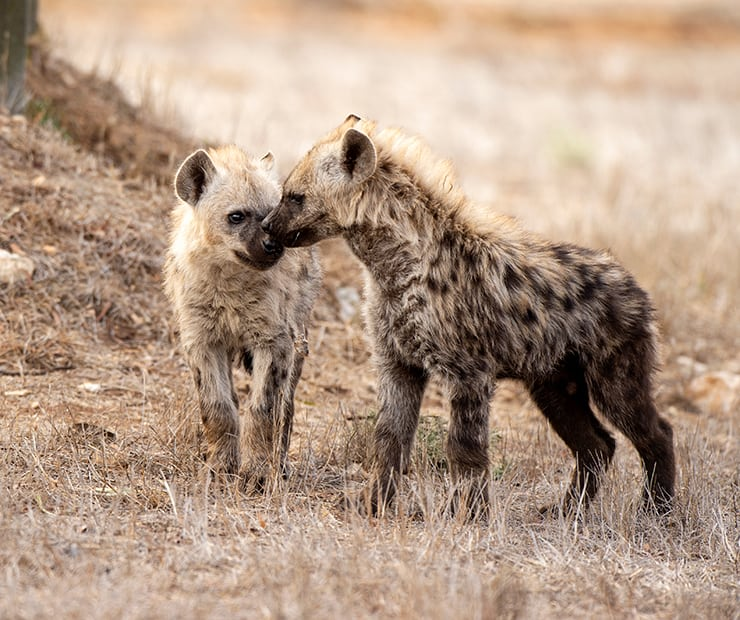
If you think birth is difficult for hyenas, mating is no easier. Males must overcome significant anatomical and social obstacles just to reproduce.
- Males Are Submissive to Females
- Unlike in many species where males dominate, male hyenas are the weaker sex in both power and ranking.
- They must approach females cautiously, often displaying submissive behavior to gain approval.
- Navigating the Pseudo-Penis
- Since females have no traditional vaginal opening, males must carefully maneuver through the pseudo-penis to copulate successfully.
- This requires both patience and precise positioning, making it one of the most complex mating processes in the animal world.
- Only the Strongest Males Get to Reproduce
- Males don’t fight each other for dominance like in other species. Instead, they must earn the female’s trust over time.
- Females choose mates based on persistence, patience, and respect, ensuring only the most determined males pass on their genes.
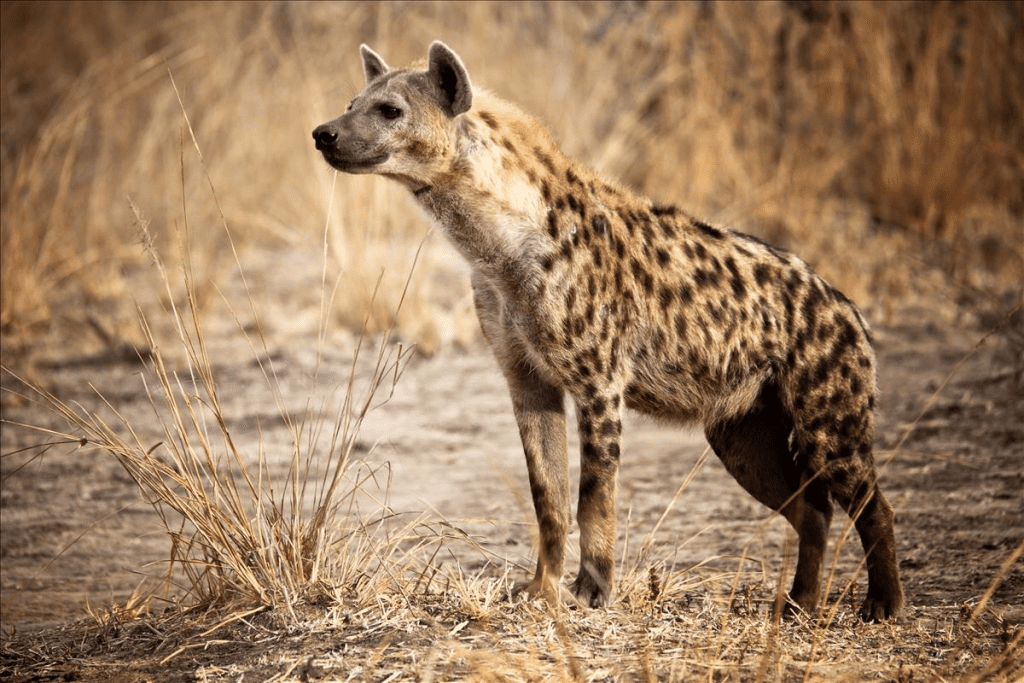
Given how dangerous and inefficient the reproductive process is for hyenas, one might wonder why evolution hasn’t corrected this issue.
The answer lies in survival strategy and social dynamics.
- Matriarchal Control Guarantees Stronger Cubs
- By limiting mating to only the most persistent males, female hyenas ensure that their cubs inherit strong genetics.
- This method prevents weaker genes from spreading, keeping the species robust.
- Higher Testosterone Helps With Survival
- The same high testosterone that makes birth difficult also makes female hyenas stronger and more aggressive.
- This aggression helps protect their cubs and maintain dominance in their environment.
- Fewer Cubs = More Resources
- Since many cubs don’t survive birth, the ones that do are often given more attention and resources.
- This ensures the strongest cubs make it to adulthood, increasing the clan’s overall survival rate.
The Resilience of the Spotted Hyena
Despite their brutal birthing process, hyenas have thrived for millions of years. Their ability to adapt, dominate, and survive proves just how powerful evolutionary trade-offs can be.
- They are among Africa’s most successful predators, competing with lions for food.
- Their clans are ruled by powerful females, ensuring only the strongest members survive.
- They have some of the most advanced social structures in the animal kingdom, making them highly intelligent and strategic.
Video : The Most Extreme Births In The Animal Kingdom
Conclusion: Nature’s Ultimate Test of Survival
Hyenas are proof that nature often prioritizes survival over comfort. Their unique reproductive anatomy, extreme birthing challenges, and dominance-driven society have allowed them to thrive despite overwhelming odds.
While their birth process remains one of the most painful and deadly in the animal kingdom, it also ensures that only the strongest females and cubs survive.
So the next time you see a spotted hyena, remember—they’re not just fierce scavengers. They’re survivors of one of evolution’s toughest reproductive challenges.
Devastated After Burying My Wife, I Took My Son on Vacation – My Blood Ran Cold When He Said, ‘Dad, Look, Mom’s Back!’

Imagine burying a loved one, only to see them alive again. When my son spotted his “dead” mother on our beach vacation, I couldn’t believe my eyes. The truth I uncovered was far more heartbreaking than her death.
I never thought I’d experience grief so young, but here I am at 34, a widower with a 5-year-old son. The last time I saw my wife Stacey two months ago, her chestnut hair smelled of lavender as I kissed her goodbye. Then, a phone call that will forever be etched in my memory shattered my world… 💔

A man holding a smartphone | Source: Unsplash
I was in Seattle at that time, finalizing a significant deal for my company when my phone buzzed. It was a call from Stacey’s father.
“Abraham, there’s been an accident. Stacey… she’s gone.”
“What? No, that’s impossible. I just talked to her last night!”
“I’m so sorry, son. It happened this morning. A drunk driver…”

An older man holding a phone | Source: Midjourney
His words faded into a dull roar. I don’t remember the flight home, just stumbling into our empty house. Stacey’s parents had already arranged everything. The funeral was over, and I hadn’t been able to say goodbye.
“We didn’t want to wait,” her mother said, avoiding my eyes. “It was better this way.”
I was too numb to argue. I should have fought harder. I should have demanded to see her, to say goodbye. But grief does funny things to your mind. It clouds your judgment and makes you accept things you’d normally question.

A grieving man in a cemetery | Source: Pexels
That night, after the funeral, I held Luke as he cried himself to sleep.
“When’s Mommy coming home?”
“She can’t, buddy. But she loves you very much.”
“Can we call her? Will she talk to us, Daddy?”
“No, baby. Mommy’s in heaven now. She can’t talk to us anymore.”
He buried his face in my chest as I held him tight, my tears falling silently. How could I explain death to a five-year-old when I could barely understand it myself?

A teary-eyed little boy in bed | Source: Midjourney
Two months crawled by.
I threw myself into work and hired a nanny for Luke. But the house felt like a mausoleum. Stacey’s clothes still hung in the closet and her favorite mug sat unwashed by the sink. Every corner held a memory, and those memories were slowly haunting me.
One morning, as I watched Luke push his cereal around his bowl, barely eating, I knew we needed a change.
“Hey champ, how about we go to the beach?” I asked, trying to inject some enthusiasm into my voice.

A woman’s clothes hung in a closet | Source: Unsplash
His eyes lit up for the first time in weeks. “Can we build sandcastles?”
“You bet! And maybe we’ll see some dolphins.”
I felt a glimmer of hope. Maybe this trip was what we both needed to start healing.
We checked into a beachfront hotel, our days filled with sun and surf. I watched Luke splash in the waves, his laughter a soothing melody to my weary soul. I almost forgot the pain and lost myself in the simple joy of being a dad.

A little boy standing on the beach and holding a ball | Source: Midjourney
On our third day, I was lost in thought when Luke came running.
“Daddy! Daddy!” he shouted. I smiled, thinking he wanted more ice cream.
“Dad, look, Mom’s back!” he said, pointing at someone.
I froze, following his gaze. A woman stood by the beach, her back to us. Same height as Stacey with the same chestnut hair. My heart pounded so hard I could feel it in my throat.

A woman standing on the beach | Source: Unsplash
“Luke, buddy, that’s not—”
The woman turned slowly. And my stomach dropped the moment our eyes met.
“Daddy, why does Mommy look different?” Luke’s innocent voice cut through my shock.
I couldn’t speak. My eyes were fixed on the horror about thirty yards away, laughing.
It was Stacey.
Her eyes widened as she grabbed the arm of a man next to her. They hurried away, disappearing into the crowd of beach-goers.

A startled woman | Source: Midjourney
“Mommy!” Luke cried, but I scooped him up.
“We need to go, buddy.”
“But Dad, it’s Mom! Didn’t you see her? Why didn’t she come say hi?”
I carried him back to our room, my mind reeling. It couldn’t be. I’d buried her. Hadn’t I? But I knew what I saw. That was Stacey. My wife. Luke’s mother. The woman I thought was dead.

A little boy crying | Source: Pexels
That night, after Luke fell asleep, I paced the balcony. My hands shook as I dialed Stacey’s mother.
“Hello?” she answered.
“I need to know exactly what happened to Stacey.”
Silence, then, “We’ve been through this, Abraham.”
“No, tell me again.”

A man holding a phone | Source: Midjourney
“The accident was early morning. It was too late by the time we reached the hospital.”
“And the body? Why couldn’t I see her?”
“It was too damaged. We thought it best—”
“You thought wrong,” I snapped, hanging up.
I stood there, staring out at the dark ocean. Something wasn’t right. I could feel it in my gut. And I was going to get to the bottom of it.

A senior woman talking on the phone | Source: Midjourney
The next morning, I took Luke to the kids’ club in the resort along with his nanny. “I’ve got a surprise for you later, champ!” I promised, hating myself for the lie.
I spent hours combing the beach, the shops, and the restaurants. No sign of Stacey or her companion. With each passing hour, my frustration grew. Was I going crazy? Had I imagined the whole thing?
As the sun began to set, I slumped onto a bench, defeated. Suddenly, a familiar voice made me jump.
“I knew you’d look for me.”

Silhouette of a woman near the beach | Source: Unsplash
I turned to find Stacey standing there, alone this time. She looked just like I remembered, but somehow different. Harder. Colder.
“How?” It was all I could manage.
“It’s complicated, Abraham.”
“Then explain it,” I snarled, my hands shaking with anger and shock as I secretly captured her conversation on my phone.

A sad woman with her eyes downcast | Source: Midjourney
“I never meant for you to find out like this. I’m pregnant.”
“What?”
“It’s not yours,” she whispered, not meeting my eyes.
The story slowly spilled out. An affair. A pregnancy. An elaborate plan to escape.
“My parents helped me,” Stacey admitted. “We knew you’d be away. The timing was perfect.”
“Perfect?” Do you have any idea what you’ve done to Luke? To me?”
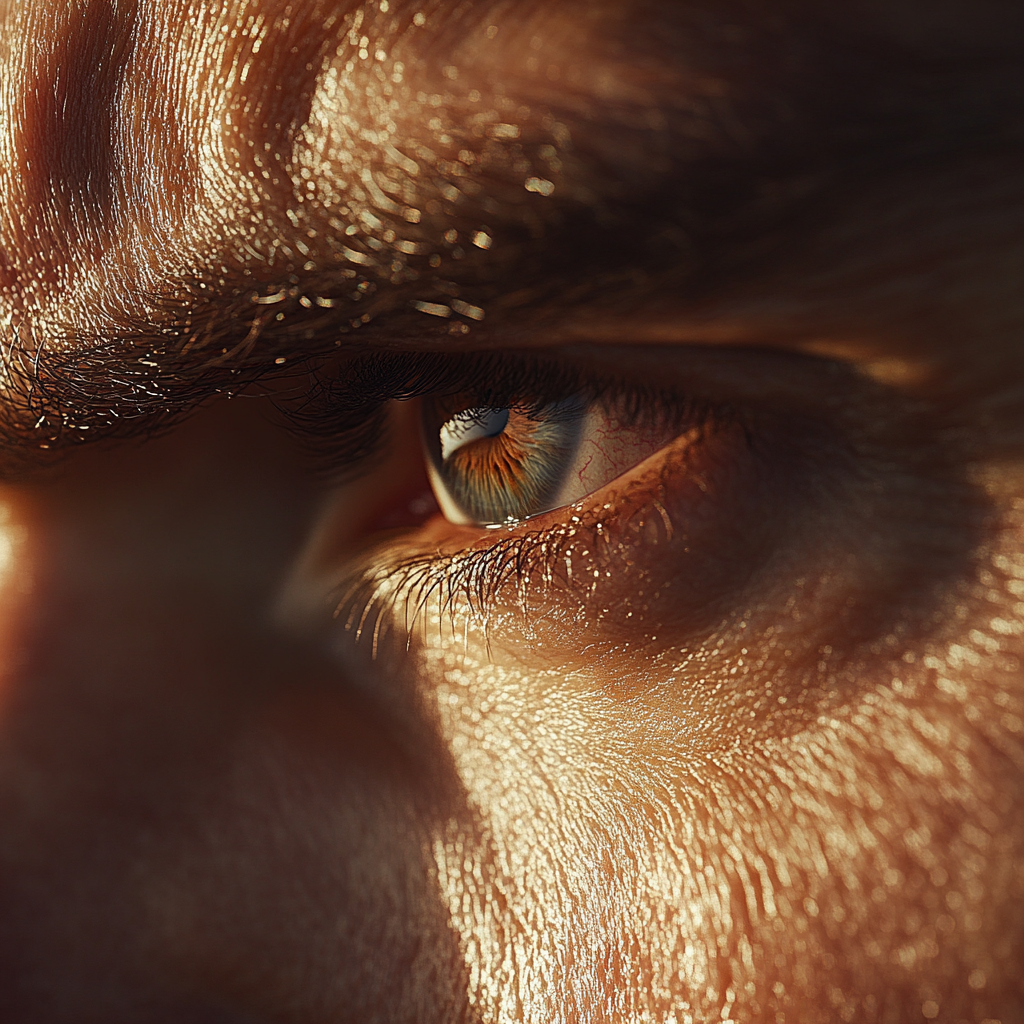
Close-up of a furious man frowning | Source: Midjourney
Tears streamed down her face. “I’m sorry. I couldn’t face you. This way, everyone could move on.”
“Move on? I thought you were DEAD! Do you know what it’s like to tell your five-year-old son his mother is never coming home?”
“Abraham, please try to understand—”
“Understand what? That you’re a liar? A cheater? That you let me grieve while you ran off with your lover?”

Close-up of a distressed woman | Source: Midjourney
“Keep your voice down,” she hissed, glancing around nervously.
I stood, towering over her. “No. You don’t get to call the shots anymore. You lost that right when you decided to play dead.”
As Stacey opened her mouth to respond, a small voice cut through, stopping me cold.
“Mommy?”
We both turned. Luke stood there, his eyes wide, clutching his nanny’s hand. My heart sank. How much had he heard?

A sad little boy crying | Source: Pexels
Stacey’s face went white. “Luke, honey—”
I scooped him up, backing away. “Don’t you dare speak to him.”
The nanny looked confused, her eyes darting between Stacey and me. “Sir, I’m so sorry. He ran off when he saw you.”
“It’s okay, Sarah. We’re leaving.”
Luke squirmed in my arms. “Daddy, I want to go to Mommy… please. Mommy, don’t leave me. Mommy… Mommy!”

Close-up of a startled woman’s eyes | Source: Midjourney
I carried him away, ignoring his tearful pleas. In our room, I packed frantically while Luke peppered me with questions.
“Why are you crying, Daddy? Why can’t we go to Mommy?”
I knelt before him, taking his small hands in mine. How could I explain this? How do you tell a child that his mother chose to abandon him?
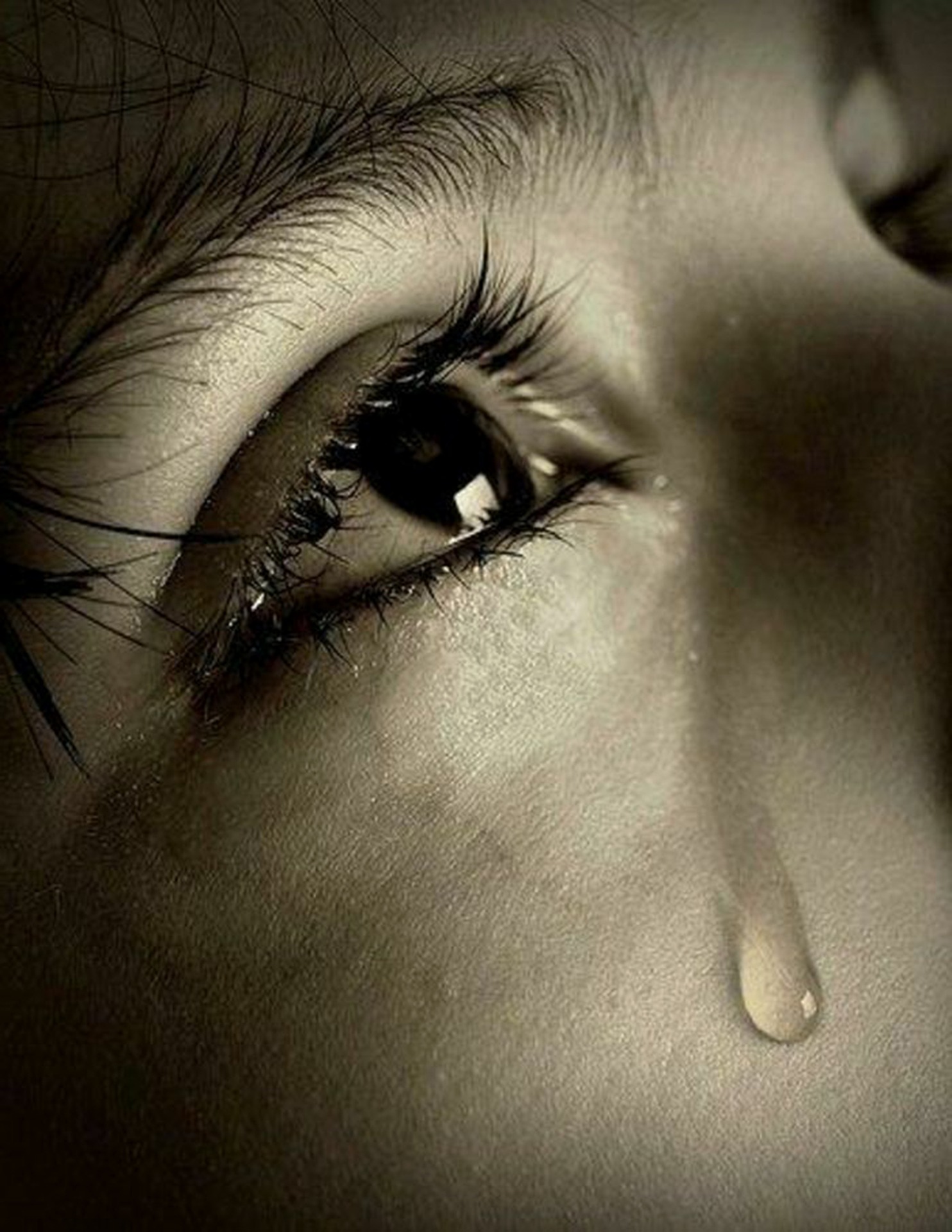
A teary-eyed little boy looking up | Source: Pixabay
“Luke, I need you to be brave. Your mother did a very bad thing. She lied to us.”
His lower lip trembled. “She doesn’t love us anymore?”
The innocent question shattered what was left of my heart. I pulled him close, unable to hold back my tears. “I love you enough for both of us, buddy. Always. No matter what happens, you’ll always have me, okay?”
His tiny head nestled against my chest, a small nod followed by a deep sleep. His tears soaked through my shirt, leaving a damp, salty reminder of our shared grief.

A sad little boy looking out the window | Source: Freepik
The next few weeks were a blur. Lawyers, custody arrangements, and explaining to Luke in terms a 5-year-old could understand. Stacey’s parents tried to reach out, but I shut them down. They were as much to blame as she was.
One month later, I sat in my lawyer’s office and signed the final papers.
“Full custody and generous alimony,” she said. “Given the circumstances, Mrs. Stacey didn’t contest anything.”
I nodded, numb. “And the gag order?”
“In place. She can’t discuss the deception publicly without severe penalties.”

A lawyer in her office | Source: Pexels
As I stood to leave, my lawyer touched my arm. “Abraham, off the record, I’ve never seen a case like this. How are you holding up?”
I thought of Luke, waiting at home with my parents, the only ones he could trust now. “One day at a time!” I said.
In the eyes of the law, I was no longer a widower. But in my heart, the woman I married was gone forever, leaving behind only a ghost of broken promises and shattered trust.

Grayscale of an emotional man | Source: Pixabay
Two months later, I stood on our new balcony, watching Luke play in the backyard. We’d moved to a different city, a fresh start for both of us. It hadn’t been easy. Luke still had nightmares and still asked about his mom. But slowly, we were healing.
One day, my phone buzzed with a text from Stacey.
“Please, let me explain. I miss Luke so much. I’m feeling so lost. My boyfriend broke up with me. 😔🙏🏻“
I deleted it without responding. Some bridges, once burned, can never be rebuilt. She’d made her choice, and now she had to live with it.

Close-up of a man holding a phone | Source: Unsplash
As the sun set on another day, I hugged my son tight. “I love you, buddy,” I whispered.
He grinned up at me, his eyes shining with trust and love. “I love you too, Daddy!”
And in that moment, I knew we were going to be okay. It wouldn’t be easy, and there would be tough days ahead. But we had each other, and that’s what mattered most.

A father and child holding hands | Source: Pexels
This work is inspired by real events and people, but it has been fictionalized for creative purposes. Names, characters, and details have been changed to protect privacy and enhance the narrative. Any resemblance to actual persons, living or dead, or actual events is purely coincidental and not intended by the author.
The author and publisher make no claims to the accuracy of events or the portrayal of characters and are not liable for any misinterpretation. This story is provided “as is,” and any opinions expressed are those of the characters and do not reflect the views of the author or publisher.



Leave a Reply